ALDA’s Garden Drainage Guide
Whilst garden drainage may not be the most riveting of gardening subjects, it is nonetheless an important factor in any successful garden. If you have any sort of drainage issues you will certainly know about it! Here's our whistle stop guide of what you need to know about the subject.
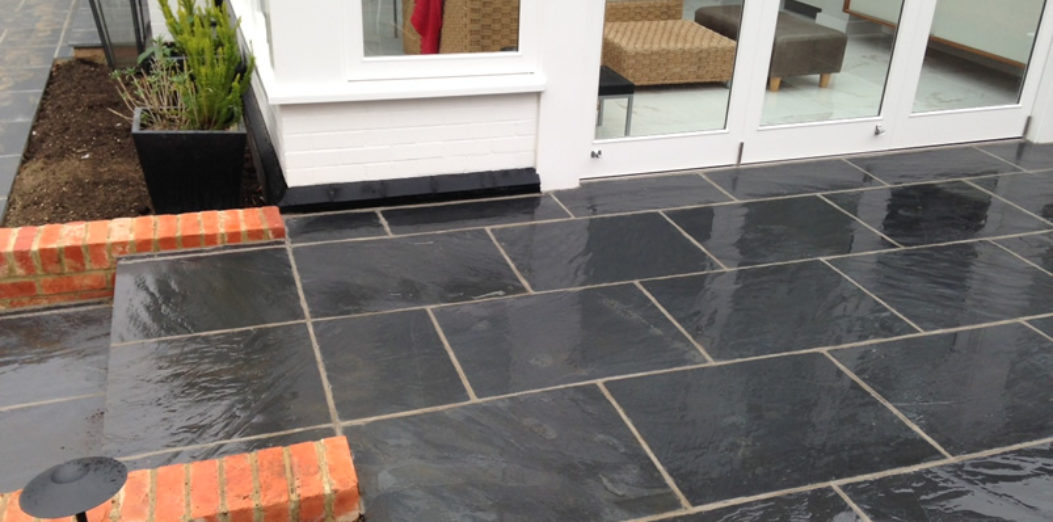
Introduction to ALDA’s Garden Drainage Guide
Drainage is close to our heart at ALDA Landscapes! We know that a new garden, patio, path, driveway or wall is a significant investment for your property, which you’ll want to enjoy for years to come. That’s why if you’re having any landscaping work done, we recommend that you ALWAYS ask your contractor what they intend to do about drainage. It’s hard to overemphasise how important it is to ensure drainage is considered when having any landscaping work done.
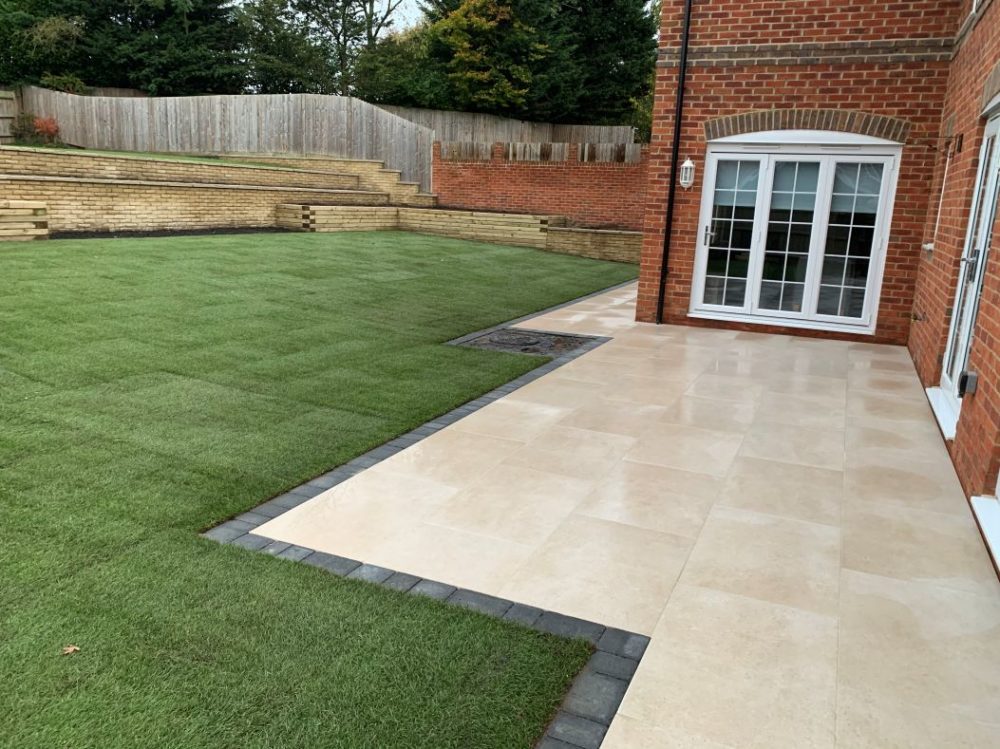
1. Path and Patio Drainage
There is one main aim here – to prevent water sitting (or running) where it isn’t wanted. This includes:
- Preventing puddling
- Stopping water pooling next to the retaining walls of a sunken patio
- And probably most importantly, preventing a build-up of surface water against the wall of the house.
Where possible, paths and patios should always be built with a fall (a very gentle gradient) to direct water to a lawn or border, where it can be gently absorbed into the soil.
Where the land slopes towards the house (or where there is no lawn or border to drain to), or where patio finishes flush to bi-fold doors, additional drainage gulleys and channels may be required to capture and disperse the water – either by feeding it into a strategically located soakaway, or – and where permissible – the household storm (rainwater) drain system. Some examples of the drainage channels that we use can be seen below and, depending on what is needed, these could take the form of ACO drains or channel slot drains.
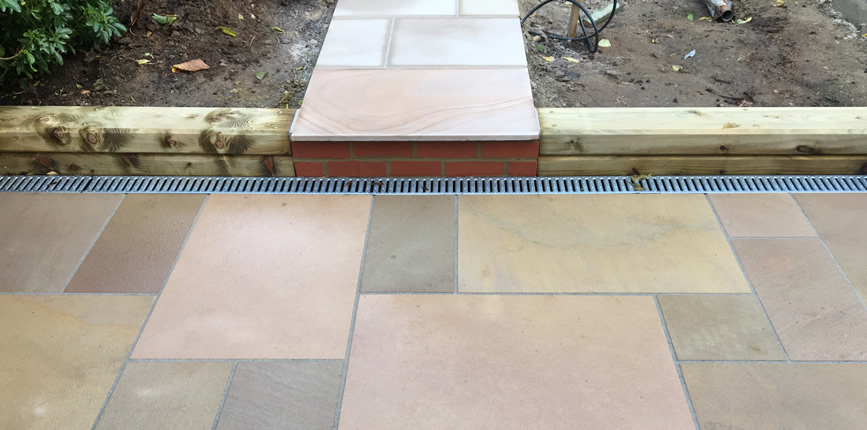
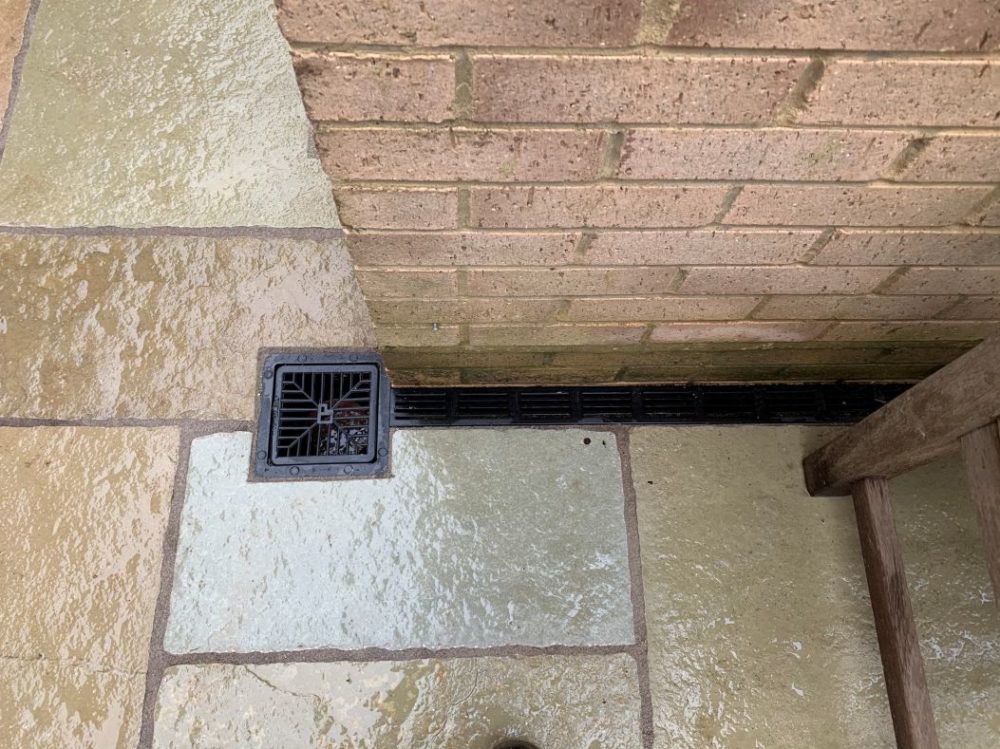
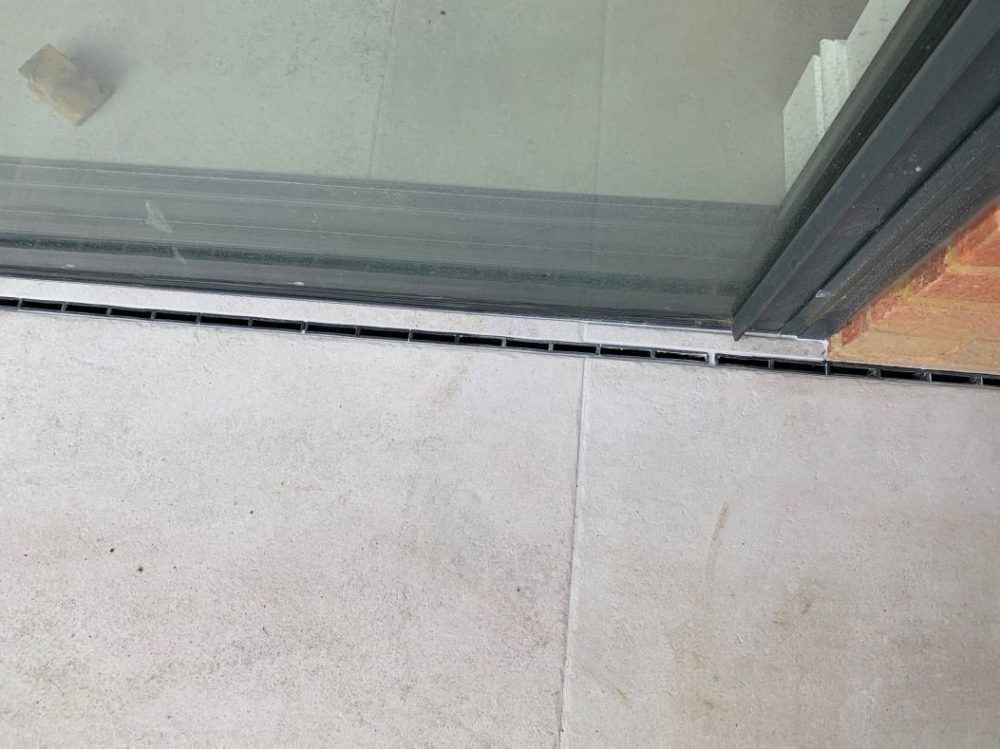
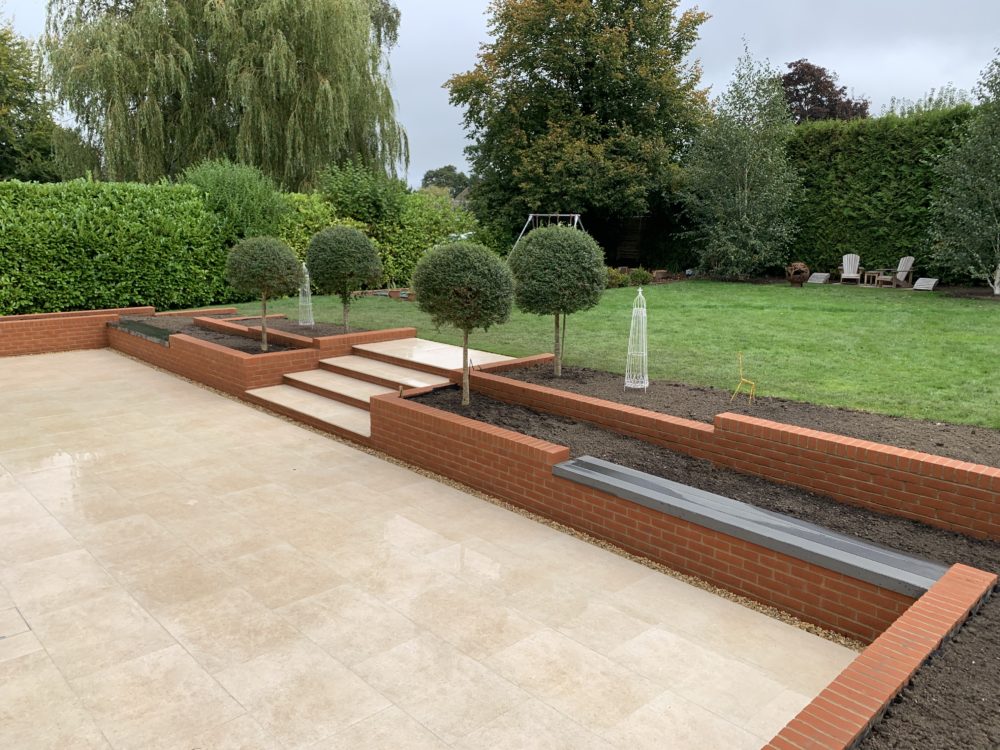
2. Retaining Wall Drainage
Retaining walls are another area where drainage is vital – to prevent the build-up of water behind the retaining wall (and potentially, subsequent collapse of said wall!) The drainage here normally takes the form of weep holes or vents in the wall and /or a perforated pipe set in shingle, angled to take the water into a soakaway or other outlet.
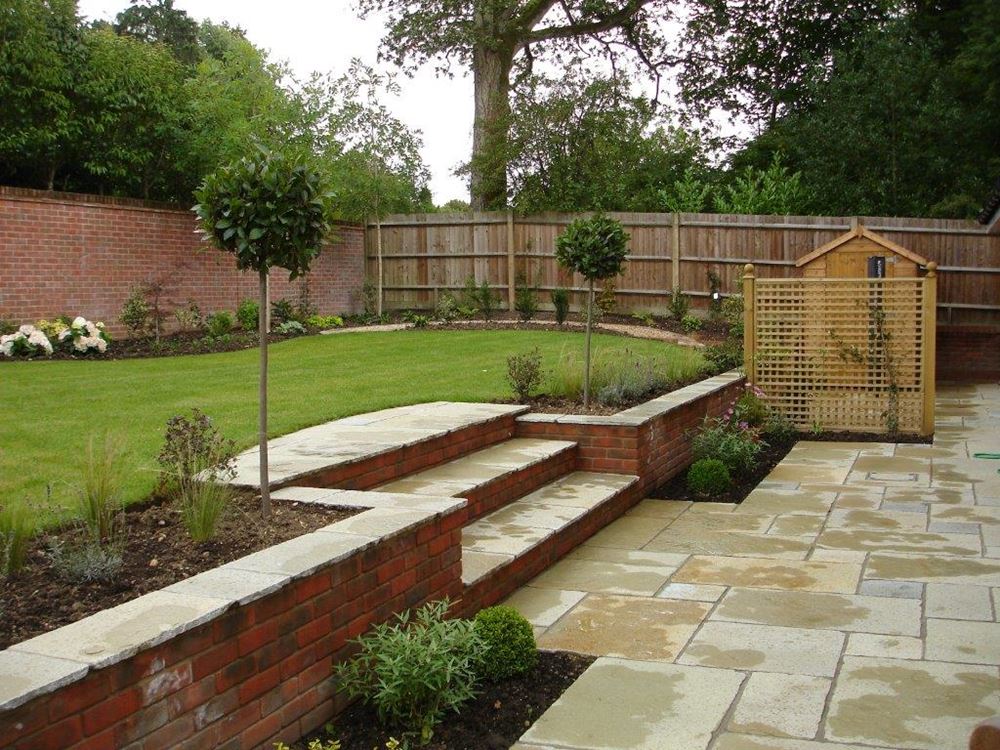
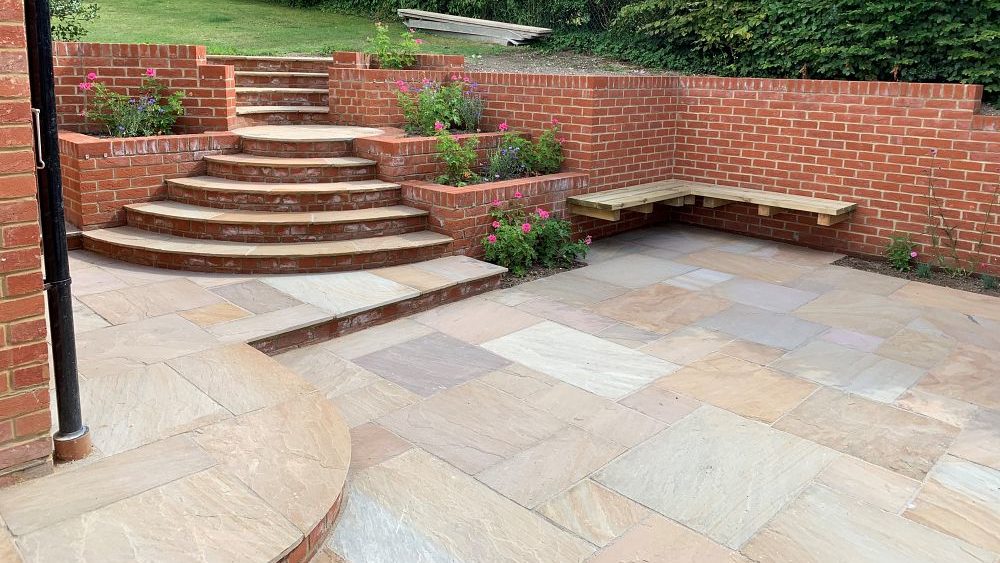
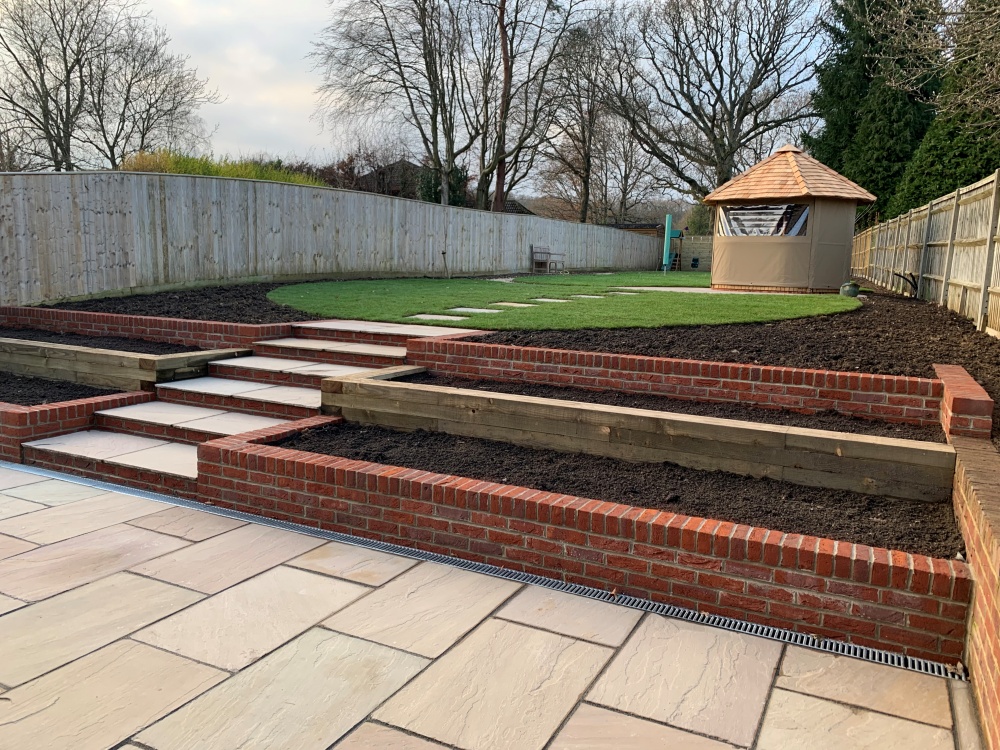
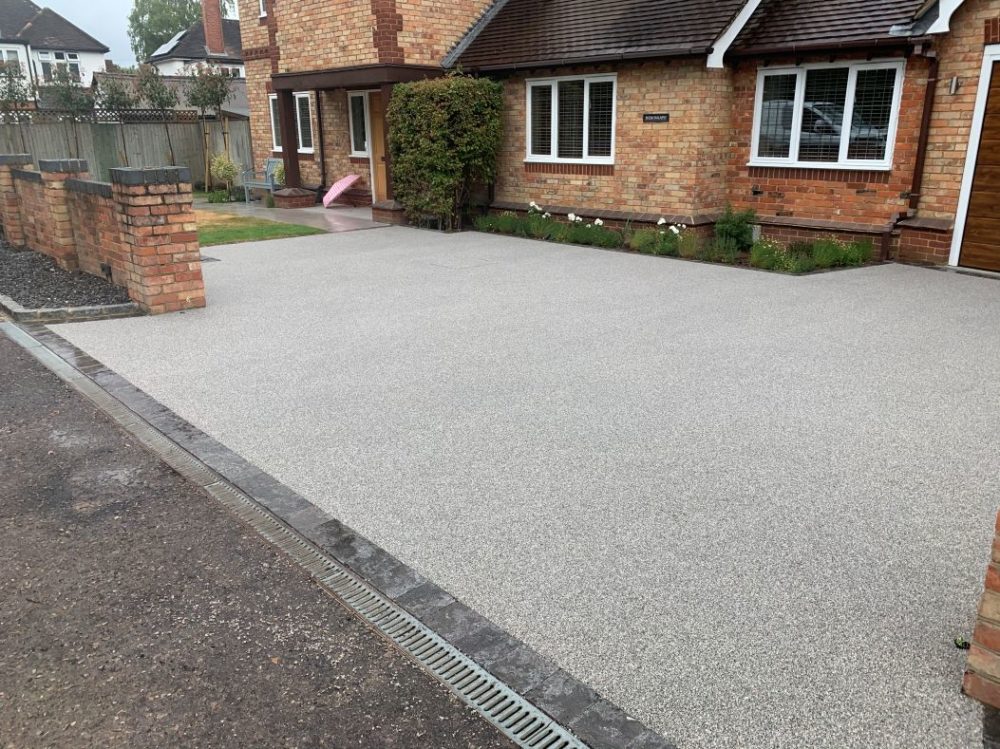
3. Front Drive Drainage
Front drives bring a whole new set of issues of their own… If you own a driveway, it is your responsibility to make sure it drains properly. In fact, you would need to obtain planning permission if you wanted to build a replacement driveway that was:
- Over 5 square metres,
- Used an impermeable material (e.g. standard block paving)
- And had no facility for the drive to drain to a porous or permeable area.
Assuming you don’t want the hassle of having to apply for planning permission (who does?… besides, permission may well not be granted anyway) the drive either has to:
- Drain to a border, lawn or gravel area, where the water can be absorbed naturally into the soil. Drainage might simply be by means of a fall (very slight gradient), or by way of drainage gulleys, pipework or a soakaway.
- Or be constructed using permeable materials (e.g. gravel, permeable paving, porous asphalt, or resin) so that the water can drain through it.
Full government guidance on front gardens can be found here at the time of writing (or try Googling ‘paving front gardens – government guidance’).
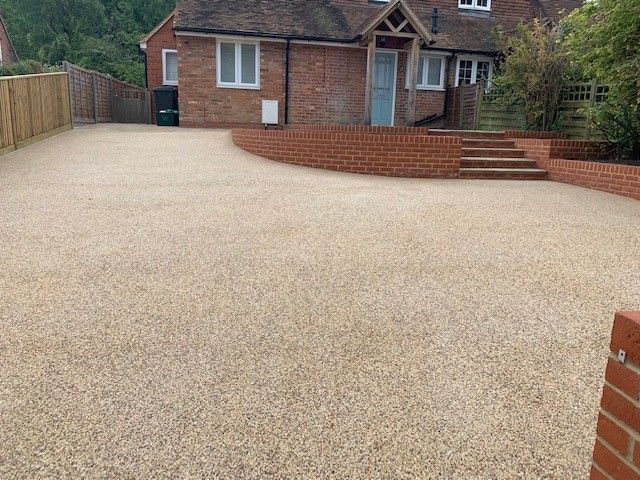

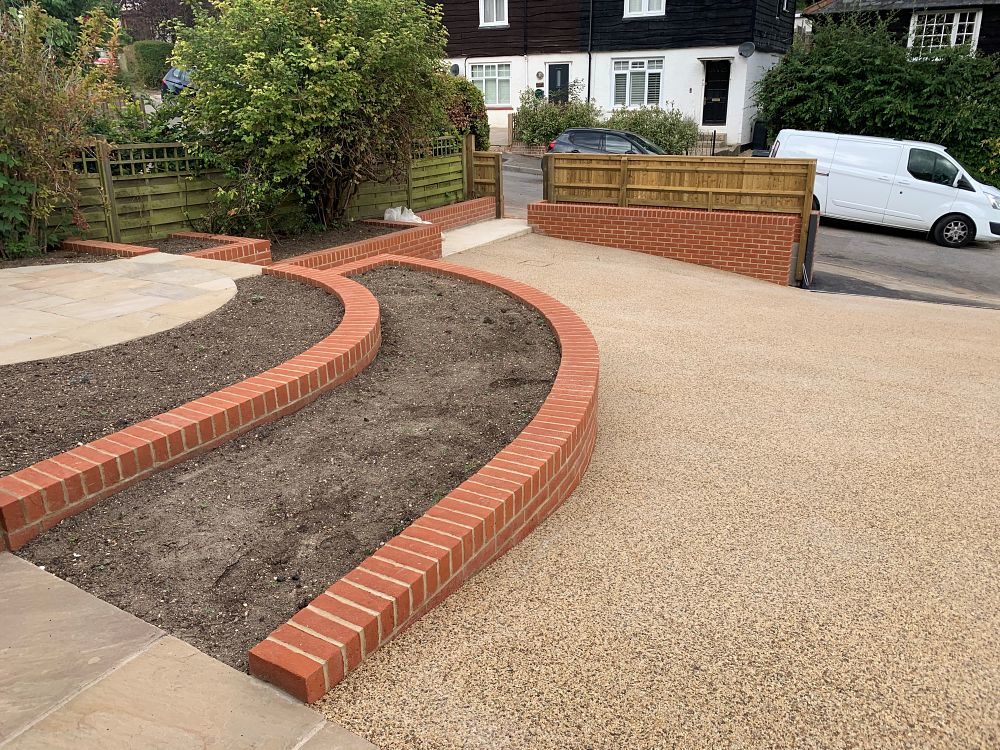
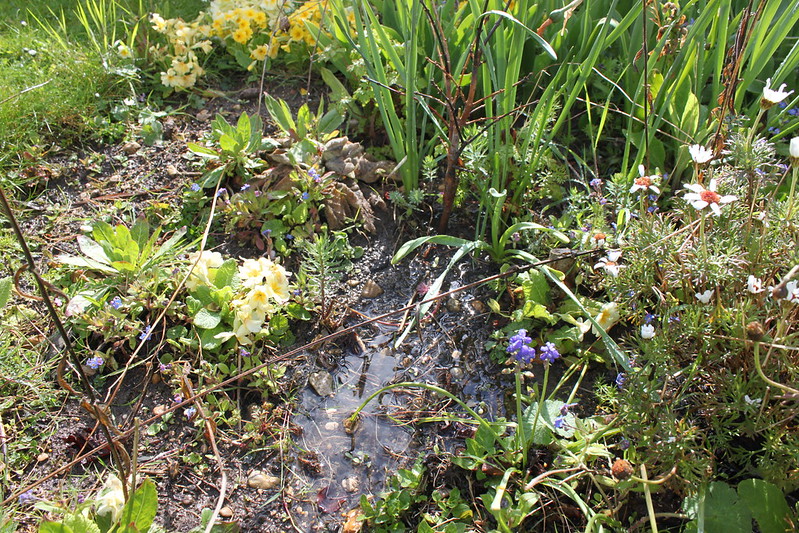
4. Lawn and Plant Bed Drainage
The three items above are in many ways the simplest to address. But when most people talk about garden drainage, they aren’t talking about patios, driveways and retaining walls. Rather, they are referring to the problems caused by having a frequently soggy or waterlogged garden – often due simply to the local topology surrounding the garden.
These are often far more challenging, so we’ve linked to two separate blog posts below that discuss potential solutions. The first looks at ways to cope with a waterlogged garden via de-compacting the soil and using plants that are happy in wet soils. The second takes a look at land drainage systems – often the only real solution if an area of the garden is permanently wet.
In Conclusion
This is of course only an introductory guide, but hopefully one which will give you a good overview of the subject – let us know if you have questions.
In the meanwhile, another very useful and extensive resource can be found on the PavingExpert website: https://www.pavingexpert.com/drainage.
Photo Credits
“Waterlogged Garden April” by tejvanphotos is marked with CC BY 2.0.